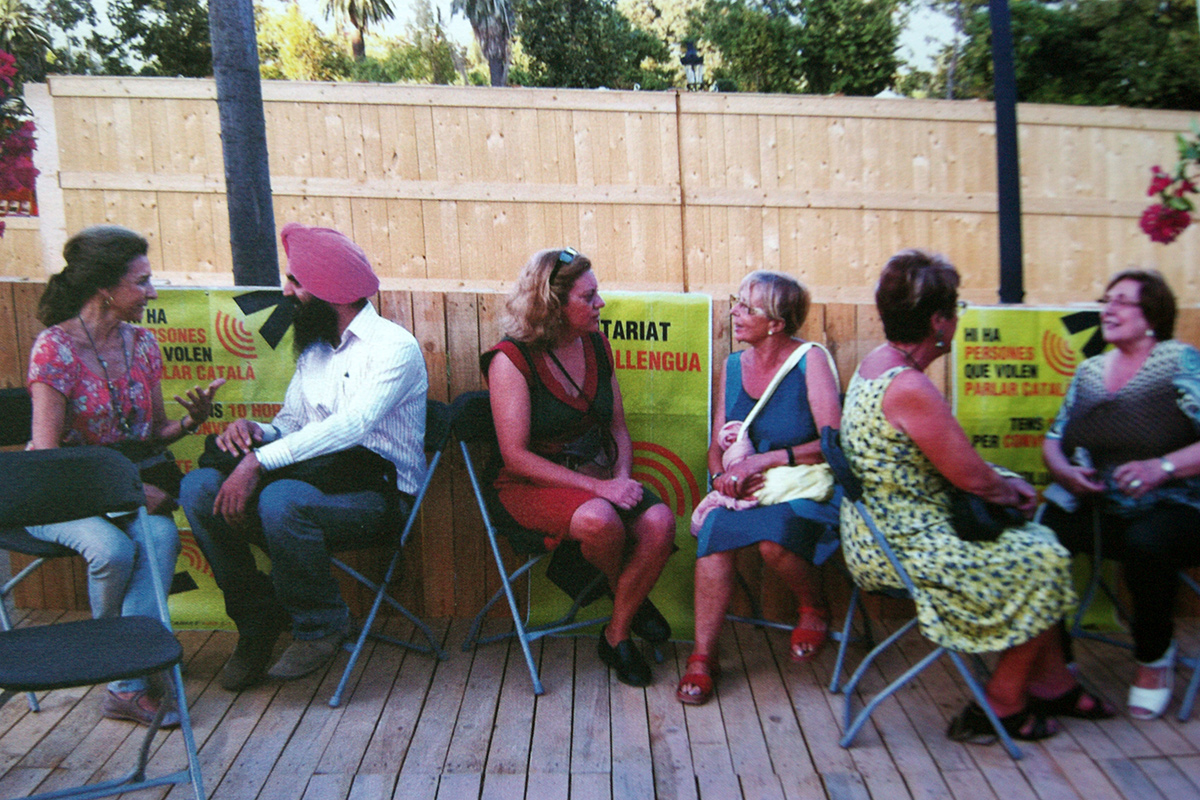A Multilingual Catalonia

In the late twentieth century, there was an extremely successful campaign in Catalonia to create awareness that we are one people. Its slogan: Som 6 milions (“There are six million of us”).
Just a few years later, shortly after the turn of the millennium, the figure was already inaccurate. By then there were seven and a half million of us. In this short period, over a million people from all round the world arrived in Catalonia—and with them, they brought their languages.
In the 1960s, Catalonia experienced an influx of immigrants that radically changed its demographic and linguistic composition. Faced with this new population increase, some feared that Catalan could not withstand a second wave of migration. We started treating newcomers as we would not want them to treat us: by ignoring or denying their identity.
Even though we resented that others treated us as “Spaniards” all over the world, that they assumed our language was Spanish, we behaved no differently. We attributed to new immigrants the official language of their country. We assumed that Moroccans, the largest group, all spoke Arabic. With the Pakistanis, we took it for granted that their language was Urdu. We thought all Latin Americans were Spanish speakers. And we even expected them to speak nonexistent languages, such as “Nigerian” or “Senegalese.”
This negation of these other languages was exacerbated by the most characteristic behavior of speakers of minority languages: addressing strangers or foreigners in the dominant language, in this case Spanish. It is the most obvious threat to the survival of the Catalan language, yet it is still habitual behavior among native speakers.
Faced with these facts—the denial of diversity on the one hand, and the denial of one’s own language on the other—the Study Group on Endangered Languages (GELA in its Catalan acronym) at the University of Barcelona started an inventory of all the languages spoken in Catalonia. Our project had two basic objectives: to publicize the great linguistic diversity in Catalonia and its value, and to generate a current of reciprocity that helps to galvanize Catalan and other languages spoken by Catalans.
As a result, we have identified over 300 languages spoken by Catalans, plus a large number of language-related civic activities. In the process, we met so many people with surprising stories:
- Two Kalaallisut (Greenlandic) speakers who did not know each other
- A family who came from Mongolia in 2001, the first of 117 Mongolians living in Catalonia in 2017
- A group of Egyptians who said they spoke Coptic (ancient Egyptian language used primarily in the church)
- Iranians who swore they were Persian speakers until following a process of identification with Catalan and claiming Azeri as their first language instead
- Peruvians who, through Catalan, “discovered” the native languages of their country
- Tamang and Sikkimese speakers who used Catalan to increase awareness of their languages, both Sino-Tibetan languages spoken in Nepal
- The Pulaar speaker from Senegal who said that, since he could not fight for his language in his country, he would do so for Catalan in Catalonia
In addition to GELA’s activities, many towns, libraries, schools, and other organizations undertook language inventories as a way to find out more about newcomers. Information about these languages began to be part of Catalans’ general cultural knowledge. The best summary of this process came from a Bolivian: “If I say in Madrid that I speak Quechua, nobody pays any attention to me. If I say it in Barcelona, everyone asks me questions.”
As for our second objective of galvanizing the use of Catalan, the language has managed to be one of the few non-state languages in Europe to gain considerable numbers of new speakers. Schools have played a large role in this revitalization, teaching Catalan as a second language. In addition, the Consortium for Language Normalization, which has thousands of adult students in its Catalan courses, has ensured that Catalan is now spoken in accents from all over the world.
As I said before, one of the problems we have when it comes to revitalizing the language is that Catalans don’t use it when we talk to someone who we think isn’t from here. The paradox is that when this other person speaks Catalan, language is a way to provide them with paperless citizenship. We like to believe that if you speak Catalan, you are Catalan. In general, this recognition has enormous power when it comes to generating reciprocity. So despite the fears that so many incoming languages would have a negative impact on Catalan, the survival of the language actually depends on these new speakers.
Here in Catalonia, language is a sign of identity, and it can also be transmitted and added to other identities. It the most cohesive element in this diverse society.
Maria Carme Junyent is a professor in the Department of General Linguistics at the University of Barcelona. She is also one of the founders of the Study Group for Endangered Languages (GELA), which partners with the Smithsonian on our Sustaining Minoritized Languages in Europe project.

